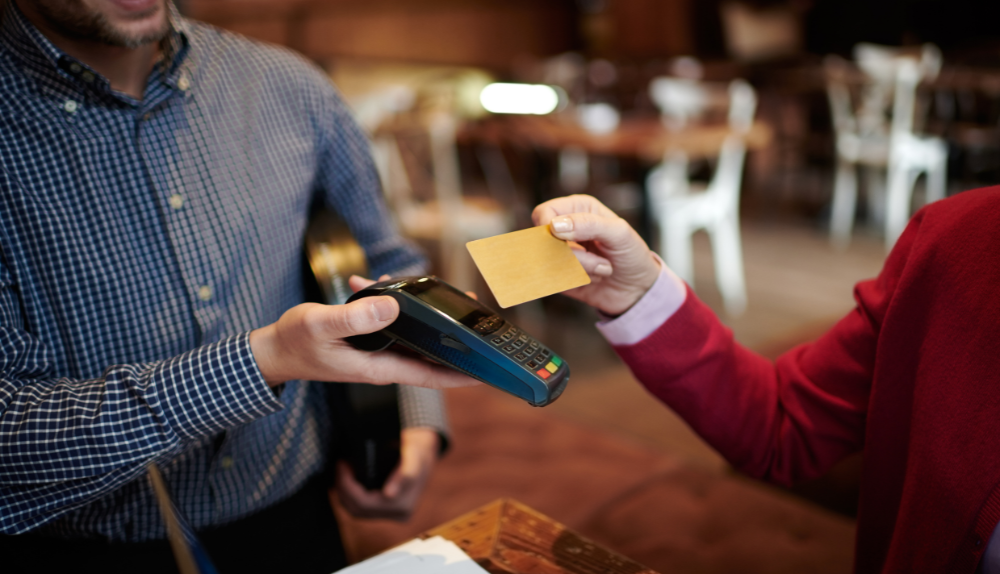
By max May 2, 2023
Most merchants accepting card payments are familiar with the merchant account reserves, a portion of your funds kept aside by your acquiring bank for emergencies. The bank issuing your card needs protection from fraud, chargebacks, and other financial issues that can expose the bank to increased risk of liability.
You can think of it as a security deposit that protects the interest of the acquiring bank and the merchant. We’ve explained all you should know about merchant account reserves, how they work, their importance, and how they protect you from unforeseen events. Let’s get started.
What is a Merchant Account Reserve?
A small percentage of the sales from the merchant’s account is set aside as a reserve. The processing bank maintains reserves to ensure protection from future liabilities. The reserve can be used for funding during an emergency.
The reserves are held in a separate account and the percentage of this reserve is determined based on the merchant’s risk level and sales volume. A business that falls in the high-risk category will likely keep more money aside for the reserve.

Note that the bank credits the money back to the merchant’s account if they are doing well financially. The reserve percentage may vary from one processing bank to another. It also depends on the merchant’s monthly sales volume. Usually, banks require businesses to hold 5-10 percent of their monthly sales in reserve.
Understanding the Chargeback Process
Merchant account reserves wouldn’t be needed if all credit card transactions were straightforward. You may have heard of the chargebacks, which a customer can file if they are not satisfied with the product delivery or believe an unauthorized transaction is listed on their card statement.
The cardholder contacts the issuing bank to fight the chargeback and reverse the transaction. The bank will assess the claim and match it with the pre-determined chargeback approval criteria to figure out whether the claim is legitimate.

The bank credits the amount equal to what was debited from the customer’s account and recovers the money from the processor or the merchant’s acquiring bank. The processor refunds the issuing bank and collects this amount from your merchant. The process can become complex when the number of chargebacks grows rapidly and the merchant’s account doesn’t have sufficient balance to pay the acquiring bank.
Here, the acquiring bank is held liable for making timely payments to the issuing bank. To offset this liability, these processors maintain a reserve account so that if the merchant’s account balance isn’t enough to pay chargeback with fees, they can use the reserve to clear all dues. As mentioned before, the amount in your reserve is held temporarily and will most likely be credited back to the merchant if they maintain their account balance.
Who Needs to Have a Reserve Account?
You may have heard of the reserves in accounting. Every business, irrespective of its size and industry, maintains a reserve account and deposits a small percentage of its monthly or annual income in the account to ensure protection from financial loss. These funds come in handy in case of emergencies, like your debt starts piling up or changes in trends and customers’ buying patterns make it difficult to keep your business alive.
Although most merchants accepting card payments require reserve, it’s a must for high-risk businesses. Due to the nature of the business and the increased likelihood of the company shutting down, acquiring banks saves a part of the business’ income in reserves. This mitigates the risk of the bank suffering from a financial loss.
The best example of people that need a reserve account is travel merchants. Since there’s always a risk of the event getting canceled because of weather issues and unforeseen conditions, travel merchants can have a reserve that they can use if anything unusual happens.
That was just one example. Nearly every merchant can have a reserve if they are exposed to high risk. A few industries that absolutely need reserve are CBD, travel, sports betting, tech support, debt consolidation, tobacco, e-cigarettes, vaping, and more. Despite the risk they carry, not every merchant has a reserve account. Whether they need reserve depends on the processing bank, its risk assessment, and its processing history.
Let’s check out the three types of merchant account reserves.
Types of Merchant Account Reserves
Although each processor maintains a separate reserve account, the method of holding funds and the criteria for deciding the amount to be held can differ. Reserves can be categorized into the following types.
-
Rolling Reserves
Most merchant account reserves are rolling reserves, in which a specific percentage of the amount from the credit card deposits is held in the reserve account and is released within a short period. It’s mostly 5-15 percent of your deposit. Let’s say your processor has a 10% reserve rate for 12 months. Every month, they will hold back 10% of your total card sales for a period of 6 months.
Based on your financial condition, they will start releasing the money within a month. There’s no maximum threshold for the amount the acquirer can keep in the reserve. It directly depends on the sale percentage. The only restriction here is holding the account for longer than the hold period. As the old funds get released back to the merchant, the new funds from recent card sales are added to the reserve.
-
Capped Reserve
The capped reserve also follows the fixed percentage on monthly sales method to withhold money in the reserve. The only difference between capped and rolling reserve methods is that the latter has no limits for the maximum amount that can be withheld. In capped reserve, there’s a limit for reserve. That’s usually half the total processing volume. Once this limit is reached, the acquiring bank can no longer keep reserves.
Let’s say your total sales volume is $20,000 and the reserve holding percentage is 10% with the capped amount set at $10,000. Your acquiring bank will hold back 10% of $20,000 until it reaches $10,000.
-
Up-front Reserves
As the name suggests, up-front reserve requires merchants to put a specific portion of their monthly sales in reserve before sales. This is usually 50% of your expected sales volume. The amount is held for a specific duration before it’s released back to the merchant. It doesn’t require any fixed percentage of your profits to be held in reserve. It’s rather a one-time upfront amount, which is also credited back once the trial period ends.
In addition to these, processors may have their individual reserve accounts, such as PayPal rolling reserve and Amazon reserve. While the process of keeping reserve is the same as the above-mentioned categories, they may be additional requirements or features for maintaining merchant account reserve.
When are the Reserves Released?
Reserves do not carry any interest or fees. It’s typically your money that’s stored in a separate account for a brief period. It belongs to you, so long as you do not owe anything to the bank. If you have any outstanding bills, the bank will use the funds in your reserve to clear them. How long the bank keeps these funds in reserve depends on multiple factors.
You need to go over your processing agreement with the bank to know what percentage of your credit card sales will be held in reserve and for how long.
Remember that the reserve is released, but the merchant account reserve is constant. New funds are added to the account and the process goes on until you decide to close your account. The processing bank will then release the entire amount withheld in reserves (given that you are in good standing).
For high-risk accounts, especially those that are not in good standing, might have a longer holding period for reserves. Usually, the chargeback period limit is 120 days, so the processing bank will want to hold your reserve for at least 4 months before returning it to you. The bank may also ask you to pay an upfront amount for the reserve, which might be kept in the bank until you have an account with them.
Can You Negotiate the Reserve Account?
Yes, it’s possible to negotiate your reserve terms with the bank but only after 6 months of processing. The bank will evaluate your processing history and check your financial standing to determine whether to accept your negotiation requirements.
They will also consider your risk level. If you have not got a single chargeback in six months of payment processing, there’s a good chance you can have the bank deduct the percentage of the amount withheld in reserves or shorten the duration for which the reserve is kept.
Bottom Line
Merchant account reserves are a must for processing a bank’s protection against chargebacks and financial risks. Discuss your goals with the bank to know how much they are keeping and whether they are open to negotiation. You can rest assured that the amount held in reserve will be released back by the specified time or during account closing.
